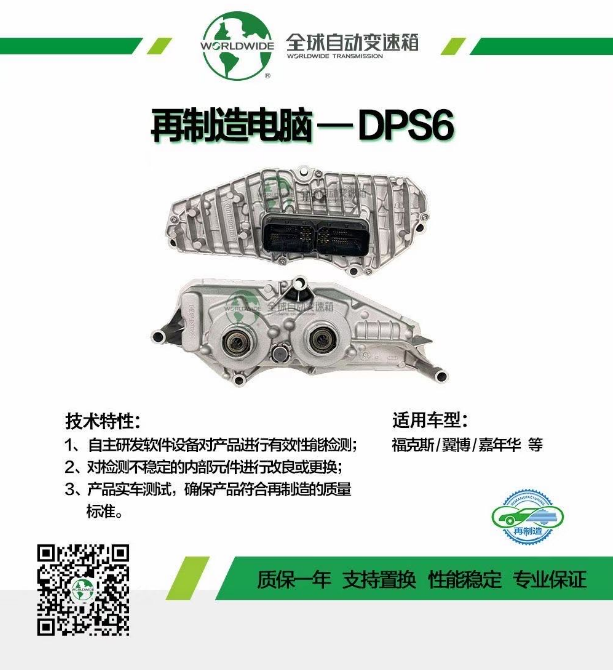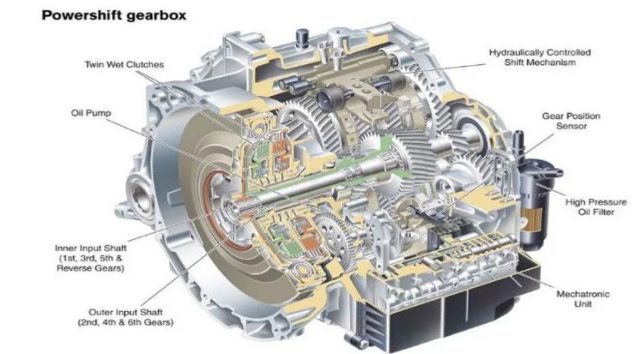The DPS6 transmission, also known as the Ford PowerShift transmission, is a type of dual-clutch transmission manufactured by Ford. This transmission type combines elements of manual and automatic transmissions for optimal balance between control and convenience. It uses two separate clutches for odd and even gear sets, which allows for faster and smoother gear shifting.

Introduction to DPS6 Transmission
Overview
The DPS6 Transmission, also known as the Ford PowerShift Transmission, is a specific type of dual-clutch transmission produced by the Ford Motor Company. This type of transmission combines elements of manual and automatic transmissions, offering the driver an optimal balance between control and ease of use. The DPS6 uses two separate clutches for odd and even gear sets, enabling faster and smoother gear shifting.
History and Development
Ford first introduced the PowerShift transmission in Europe in 2008, naming it the DPS6 transmission when it was brought to North America in 2010. Its creation stemmed from the automotive industry’s push for improved fuel efficiency without sacrificing the performance of vehicles.
The dual-clutch design provided the efficiency of a manual transmission with the ease of an automatic transmission. The DPS6 quickly became popular in several Ford models due to its fuel-saving potential and perceived smoothness during driving. Over time, however, a number of problems emerged, leading to criticisms and even lawsuits, which we will discuss further in subsequent sections.
Technical Specifications of DPS6 Transmission
Structural Composition
The DPS6 Transmission boasts a unique structural composition. It integrates two manual transmissions within a single casing. Each of these transmissions handles separate gear sets – one managing the odd gears (1st, 3rd, and 5th) and the other the even gears (2nd, 4th, and 6th). Two separate clutches control these transmissions, making gear shifts smoother and quicker.
Operation Mechanism
The operation mechanism of the DPS6 Transmission comes from the efficient coordination of its dual-clutch system. While one clutch engages the current gear, the other pre-selects the next gear. Upon shifting gears, the operation switches clutches, disengaging the current gear and engaging the next one almost simultaneously. This system results in virtually no interruption in power flow, unlike traditional automatic or manual transmissions, contributing to a smoother ride.

Key Features
Key features of the DPS6 Transmission include the following:
- Fuel Efficiency: The DPS6 transmission provides the fuel efficiency of a manual transmission due to its dual-clutch design, which contributes to improved fuel economy.
- Fast and Smooth Gear Shifts: The dual-clutch system allows the DPS6 to shift gears almost instantaneously, providing a seamless driving experience.
- Optimal Performance: This transmission offers the ease of an automatic transmission while delivering the control of a manual transmission. This combination aims to ensure optimal performance in a variety of driving conditions.
The DPS6 Transmission in Various Models
Specific Models with DPS6
The DPS6 Transmission was implemented in a variety of Ford’s popular models. Notable among these are:
- Ford Fiesta (2011-2019)
- Ford Focus (2012-2018)
- Ford EcoSport (2012-Present)
Comparative Analysis Between Models
Here’s a comparative analysis of the performance of the DPS6 Transmission across different Ford models, based on publicly available data:
| Model | Year | Average MPG | Notable Issues |
|---|---|---|---|
| Ford Fiesta | 2014 | 31 | Shuddering during shifting |
| Ford Focus | 2014 | 31 | Delayed gear engagement |
| Ford EcoSport | 2014 | 28 | Slipping, chattering, and grinding noise |
It’s important to note that the reported issues might not be indicative of all vehicles, as the experience can vary significantly depending on specific vehicle condition, driving habits, and maintenance.
Common Issues and Solutions with DPS6 Transmission
Known Issues
Despite the advantages that the DPS6 Transmission brought to certain Ford models, it has also been associated with several notable issues:
- Shuddering during shifting: This is a common issue, particularly when accelerating or decelerating. It may feel as though the vehicle is vibrating or jerking.
- Delayed Gear Engagement: Some drivers have reported a delay between shifting gears and the gear actually engaging. This delay can cause abrupt acceleration or deceleration.
- Slipping, Chattering, and Grinding Noise: Drivers have also reported noises such as chattering and grinding, as well as a sensation of the transmission slipping.
Repair and Maintenance Tips
In response to these known issues, here are a few repair and maintenance tips:
- Regular Fluid Change: Regularly changing the transmission fluid can help keep the transmission components lubricated and functioning properly. It is recommended to follow Ford’s service intervals for this.
- Software Updates: Ensuring that the vehicle’s software is up-to-date can also help. Ford has released software updates designed to improve the functionality of the DPS6 transmission.
- Clutch Replacement: If problems persist, it may be necessary to replace the clutch, particularly if shuddering or other physical symptoms are present. This should be done by a professional mechanic or a Ford dealer.
Future of DPS6 Transmission
Technological Improvements
In response to various challenges, Ford continues to innovate and improve the DPS6 Transmission. For instance, the company has introduced several software updates to address issues related to gear shifting.
Furthermore, advancements in clutch materials might lead to significant improvements. High-performance materials could increase clutch durability, reducing the likelihood of common problems such as shuddering and noise.
Considerably, advancements in transmission fluid technology could also play a significant role in improving the longevity and performance of the DPS6 transmission. For example, synthetic transmission fluids, known for their superior heat resistance and lubricating properties, might extend transmission life and improve overall performance.
Impact of Electric Vehicles on DPS6 Transmissions
With the rise of electric vehicles (EVs), the role of traditional transmissions, including the DPS6, is changing. EVs typically require fewer gears due to the wide torque range of electric motors, and some don’t require a transmission at all.
References
- Ford PowerShift transmission
- Ford Fiesta
- Ford Focus
- Ford EcoSport
- Dual-clutch transmission
- Electric vehicle
- Hybrid vehicle
